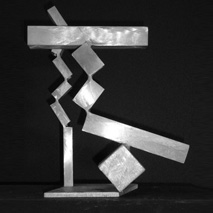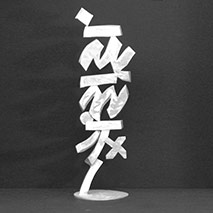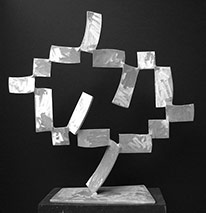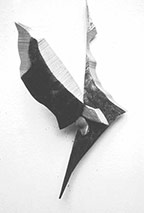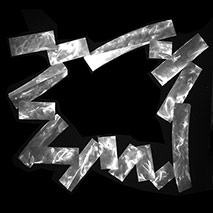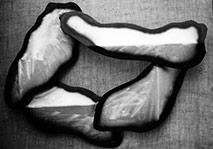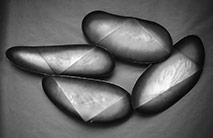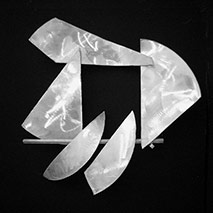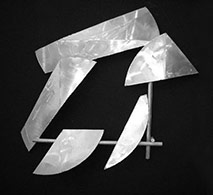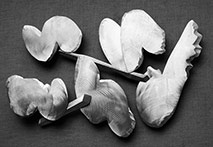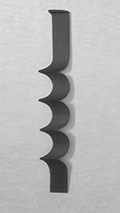 Decree 1988
Decree 1988
Calligraphic 1982-1994
In 1982, after many years of grinding painterly marks into metal surfaces, David Jacobs began to premise most of his sculptures on calligraphy. Typically starting with ink drawings, Jacobs would enlarge individual brushstrokes and translate them into aluminum. For over a decade these units functioned as building blocks for dozens of freestanding and wall-mounted sculptures. Jacobs often welded the aluminum strokes into vertical forms that are somewhat figurative, though the enlarged calligraphic marks seem to trace the quicksilver movements of an absent body. Other works organize the strokes around a central aperture, effectively splitting the difference between a frame and an image.
Some of these sculptures betray a renewed interest in Julio Gonzalez, whose elegant assemblages were surveyed at the Guggenheim Museum in 1983. But this extended examination of calligraphy is more deeply rooted in Jacobs’ biography. Though he was exposed to spoken and written Syriac as a child, he never learned the language and was left to intuit its meaning through essentially abstract sounds and strokes. This experience certainly resonates through calligraphic sculptures that know no alphabet, but nonetheless communicate by way of painterly forms, fluid movements, and reflected light.

